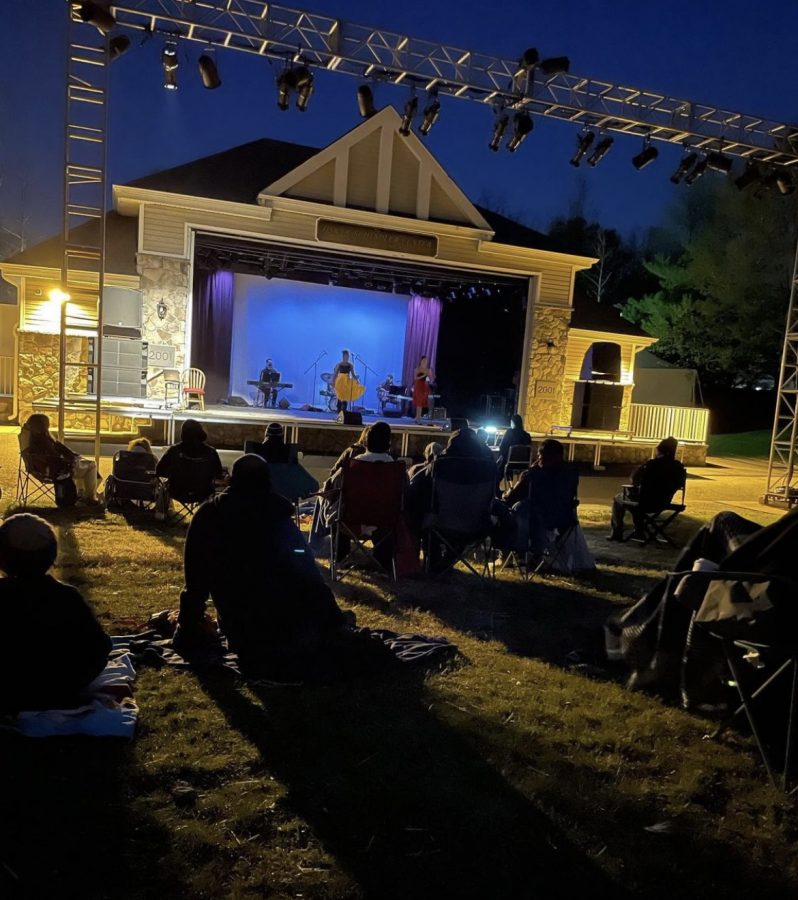The Innocence Project’s Distorted Propaganda on Rodney Reed
In November, social media users began to share the story of Rodney Reed, a black death row inmate who is currently incarcerated for the 1996 rape and murder of 19 year old Stacey Stites.
Reed was scheduled to be executed on November 20th, but with the help of nonprofit organization the Innocence Project which exonerates wrongfully convicted death row inmates, millions of social media users signed their petition to stay his execution.
These people were alarmed by the racial injustice behind Reed’s incarceration and the death row sentence he had as a black man accused of murdering a white woman by an all white jury. Understandably, there was no hesitation to help save this man’s life. But should people have done their research before signing their name to a petition they only knew about through social media posts?
Social media was able to save Reed’s life simply by sharing his story and the petition that the Innocence Project created. Reed’s pressing execution date caught the attention of many social media users who among a star studded crowd of supporters like Kim Kardashian and Meek Mill, were quick to sign the petition in hopes freeing a black man who they felt was wrongly accused by the justice system. After the petition already collected 2 million signatures, the Texas government decided to stay Reed’s execution just 5 days before he was scheduled to lose his life.
But this fairy tale ending may be more twisted than some would hope.
As new evidence emerges to prove Rodney Reed’s innocence, there is a lot of controversy surrounding how Reed may not be as innocent as the Innocence Project claims. According to Reed’s attorney, it is “scientifically and genetically impossible” that Reed committed the murder of Stacey Stites as none of his DNA has been tested on the belt that was used as the key murder weapon. Reed may be innocent from the murder of Stacey Stites, but he has been linked to various rapes in the past whose gripping details continue to haunt his victims and many people who now regret hastily signing the petition.
According to KXAN.com, Reed has an alarming criminal history of assault:
“Court records and local news reports show that the mother of Reed’s children filed charges against him in 1991 saying he attacked her and raped her.
She dropped the charges weeks later according to local news outlet KXAN.”
“In another case, Linda Schlueter picked Reed out in a lineup accusing him of kidnapping and trying to rape her before she broke free.”
Clearly, the Innocence Project intentionally left out crucial information about Reed’s history as an alleged rapist because it would have completely obliterated the air of innocence that many social media users began to associate with Rodney Reed.
If Reed has been linked to various sexual assaults, why did so many people hastily sign the petition arguing his innocence?
RACIAL TENSIONS OF REED’S CASE
The answer to that question lies in the power that social media now has on our nation’s dedication to social justice.
Modern day propaganda like the Innocence Project has shifted our nation to be more socially conscious as social media educates millions of users with a dedication to fight for justice and against racial conflicts.
When examining this case, it is important to evaluate all of the messy details that make Reed’s conviction appear to be influenced by racial tensions. One of the key pieces of evidence that landed Reed in the death row sentence is that his DNA was found inside of Stacey Stites. He later admitted that he and Stites were in an affair, which a local news outlet KXAN says “was no secret” to his community. Stites at the time was engaged to a white police officer named Jimmy Fennel, who the Innocence Project believes is the real murderer.
Another alarming aspect of this case is that Fennnel confessed to the murder of Stites to an Aryan Brotherhood member in prison who claims Fennel confessed that he killed his “n–her loving fiance” because he was angry that she cheated on him with a black man.
Since Stites murder, Fennel has also been arrested for the rape of a young woman and has recently been released from prison just last year.
Details like these, including the fact that Reed was convicted of the murder by an all white jury in a state known for it’s racial tensions is what likely caused the millions of people to sign their name to the petition. Social media users recognized a recurring pattern within the justice system and used social media in hopes of stopping it.
HISTORY OF THE DEATH PENALTY
With the history of the death penalty often being racially charged toward black Americans in cases with white victims, many people were quick to sign their names to the petition in the name of fighting for social justice and against racism before they even considered researching more about Reed.
Understandably, those that hastily signed the petition to save Rodney Reed´s life were familiar with hearing the same narrative in history of black men being wrongfully framed for the crime of raping or murdering a white woman. Long before pictures of Rodney Reed were trending on social media, we have heard this story before: a black man losing his life for a crime that he claims he did not commit.
In the rise of the Great Depression and high unemployment rates, the Scottsboro Boys were framed and convicted for the rape of 2 white women and put on death row for a crime in which they were scapegoated.
In 1955 Emmet Till was brutally beaten and killed by a mob of white men after he allegedly whistled at a white woman in the South.
We also heard this story with the execution of 14 year old George Stinney Jr, who after being suspected of the murder of 2 missing white girls, he went on trial and within hours was charged with the death row penalty.
Stinney was killed on the electric chair at age 14, the youngest black man on death row only to be exonerated 72 years after his death. His family was never able to see George grow into a young adult, instead his life was robbed by the justice system.
In every decade of American history, it seems like a black man faced the brutal consequences for crimes that they did not commit as they fell victim to the racially unjust and broken justice system of America. Though our nation has made progress since the days of the 20th century, we still reap the effects of lingering racial injustice and discrimination within the justice system.
With such a history, the wrongful conviction of Rodney Reed seemed like just another reincarnation of the same narrative. People did not want to see history repeat itself with the execution of Rodney Reed, so when the Innocence Project launched their progressive campaign that shaped Reed into an innocent man there was no hesitation in signing the petition and sharing it on social media.
What does this mean for Rodney Reed?
Yet Rodney Reed’s story is distorted and much different in some ways: his involvement in alleged sexual assault cases complicate the entire goal of 2019 America to hold men accountable of sexual assault in the rise of the Me Too Movement. How does one defend the innocence of black victim to racial profiling when that victim also allegedly contributed to the trauma of sexual assault? And do these two social justice movements mesh well in 2019 America?
The answer is that it doesn’t. We can acknowledge how wrongful it was for the Texas government to accuse a black man for the murder of a white woman while also acknowledging that it was wrong for Reed to allegedly sexually assault women. If our nation wants to uphold the growing trend to be politically and socially conscious, we cannot simply ignore the wrongdoings of others in order to put them on a pedestal. We must acknowledge the truth in order to fully be committed to social justice on all accounts.
Reed may not have been guilty of the murder of Stacey Stites, but that doesn’t mean he is innocent from his own involvement in separate sexual assault cases.











































































